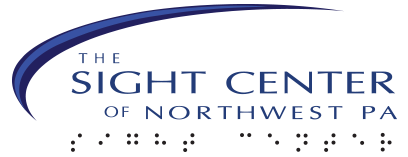Here is a list of tips that you may find useful when living with low vision. These are the types of things that you and our low vision team will work on to help you learn to function more successfully with declining vision.
- Use scissors more often than knives, especially for kitchen tasks such as cutting pizza, skinning chicken, chopping herbs, etc.
- Transparent water glasses are difficult to see. Colored glasses with weighted bottoms may help.
- Use covered containers to toss salads and instant shake-mix puddings.
- Use a muffin tin for baking potatoes, stuffed peppers or tomatoes; it is easier to locate and remove muffin tin than several items scattered on the oven racks.
- Organize ingredients and utensils on a tray when cooking.
- Squeeze an entire tube of toothpaste into a wide-mouth jar or plastic container; then simply dip out toothpaste as needed.
- Use pill organizers to keep track of medications, but check with a pharmacist to be sure it’s safe to store different kinds of medicine together. (Avoid chemical reactions!)
- Serve food on contrasting-colored dishes: pour coffee into a white mug, milk into a dark mug.
- Put salt and pepper in clear dispensers so the color difference can be easily seen.
- Replace wall socket covers and light-switch covers with ones that contrast in color to the wall.
- A clear plastic shower curtain allows more light into the shower area than an opaque or solid one.
- Avoid bright, busy visual clutter in choosing table cloths, furniture upholstery, ironing board covers, and bedspreads.
- Large print watches are now fashionable and far cheaper in department and discount stores than in the specialty catalogues.
- Rearrange furniture to best utilize light and avoid glare from windows.
- Place strips of slip-proof material in a contrasting color on the edges of steps.
- Attach friction tape or non-skid appliqués in a contrasting color in the tub or shower stall.
- Organize jewelry with pushpins on a corkboard.
- Ask your bank for large print checks and a large-print monthly account statement.
- Organize your addresses and phone numbers in a file box using 5” X 8” index cards (3” X 5” is usually too small) and black felt tip pens.
- Staple plastic drinking straws onto cupboard shelves or drawers to create organizational areas.
- Small boxes are useful to keep items separated; everything from socks to silverware may be stored this way.
- Buy soap that contrasts with the sink and bathtub; floating soap is sometimes easier to find; liquid soap dispensers are sometimes preferred; soap-on-a-rope is handy in the tub or shower.
- Use a turkey baster to fill a steam iron with water.
- Wash small items in a zippered pillow case or mesh laundry bag.
- A magnet in your sewing basket can help to pick up a lost needle or pins.
- Use a chopping board with a light and a dark side (the former for chopping green pepper and the latter for onions, for example).
- Contrasting tape can be wound, candy-cane style around the handles of pots, utensils, tools, etc. so they can be easily found on various surfaces.
- Check with your local utility company for large-print thermostat attachments.
- Staple a tape measure at each inch or half-inch mark and use for all kinds of measuring.
- Try a lighted magnifying mirror for applying cosmetics or face shaving.
- Use a single letter in felt-tip pen on the tops of medicine bottles or canned goods to identify the contents (e.g. “N” on nitroglycerine and “V” on valium; “B” on beans and “C” on corn).
- Make the bed once with great care; mark each sheet and blanket where it touches the corners of the bed with safety pins – each time thereafter when the bed is made up, simply line up the corners.
- Use sock sorters available at discount or grocery stores, even in the laundry and the drawers. Socks should either be on the feet or in the sorters.
- Don’t give up on independently measuring insulin. Talk with a diabetes educator about the many options available.
- Controllable lighting (like a gooseneck lamp) is ideal for reading. G.E. “REVEAL” bulbs will increase the contrast of reading materials.
- Have a professional low vision examination. Call us for more information, 814-455-0995!

